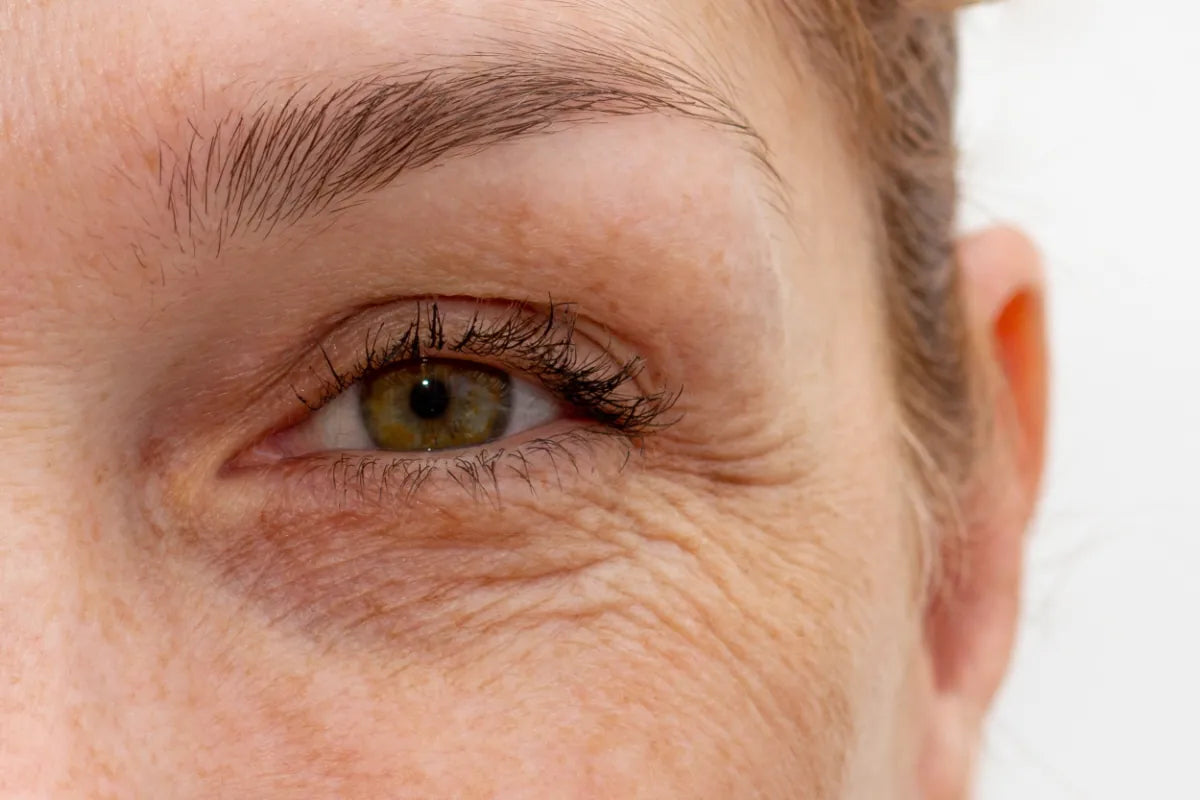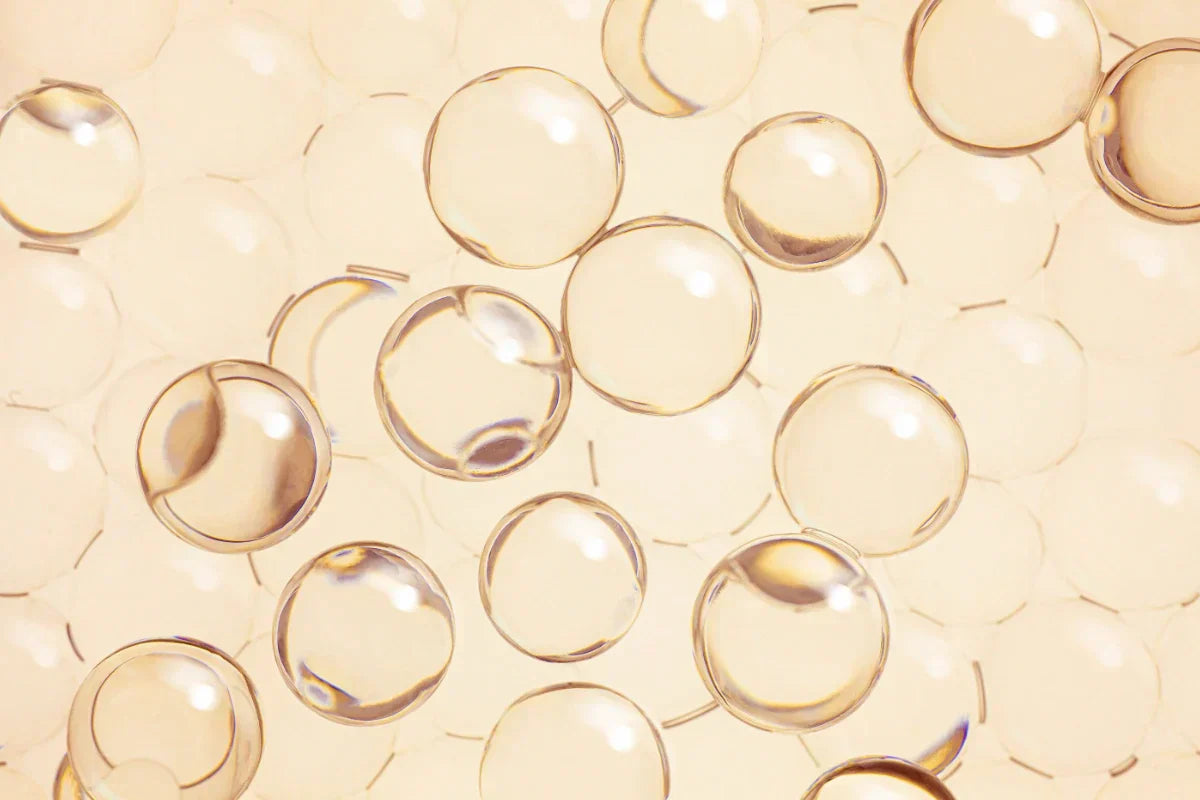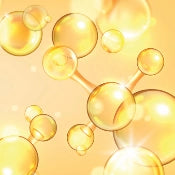Revolutionary skincare doesn’t always come from the latest trend sweeping social media. Sometimes, the most effective solutions emerge from decades of scientific research into how our skin naturally heals and regenerates. Copper peptides, particularly the extensively studied GHK-Cu compound, represent exactly this type of breakthrough, a scientifically proven approach to anti-aging that works in harmony with your skin’s biological processes rather than against them.
Unlike harsh chemical peels or aggressive laser resurfacing techniques that can cause significant skin irritation, copper peptides offer a gentler path to achieving smoother skin and reducing the appearance of wrinkles. These remarkable compounds stimulate collagen production, enhance wound healing, and provide protective effects against the aging process, all while being suitable for even sensitive skin types. By supporting the skin's natural ability to repair and renew itself, copper peptides help enhance the skin's appearance and maintain its youthful qualities as it ages.
This comprehensive guide will explore everything you need to know about copper peptides, from their molecular structure and mechanisms of action to practical usage tips and product selection strategies. Whether you’re dealing with facial wrinkles, sun-damaged skin, or simply want to prevent wrinkles from forming, understanding how copper peptides work can transform your approach to skincare and help you achieve a more youthful appearance.
What Are Copper Peptides?
Copper peptides are naturally occurring complexes formed when small protein fragments, known as peptides, bind with copper ions in their divalent state. These amino acids create powerful biological compounds that play a natural part in your body’s healing and regeneration processes. The most extensively researched and clinically proven copper peptide is GHK-Cu, a tripeptide composed of glycine, L-histidine, and L-lysine bound to copper.
This human tripeptide, GHK, occurs naturally in your plasma, saliva, and urine, although levels decline as you age, particularly in individuals over the age of 40 and above, one of several factors contributing to visible signs of aging. The GHK-Cu peptide has a molecular formula of C14H24N6O4 with a molecular weight of 340.38 g/mol, and its CAS number is 49557-75-7, making it easily identifiable in product formulations.
Historically, scientists have referred to this compound by various names, including Growth-modulating peptide and Liver growth factor Cu-GHK, reflecting its diverse biological activity throughout the body. The GHK peptide demonstrates remarkable stability when stored properly, remaining effective under inert gas at 2–8°C while being slightly soluble in aqueous acid and DMSO.

What makes copper peptides particularly fascinating is their multifaceted approach to skin health. Unlike single-mechanism ingredients that target just one aspect of aging skin, these compounds work through multiple pathways simultaneously, addressing collagen synthesis, wound healing, antioxidant protection, and skin barrier function all at once. Copper peptides also support the skin's appearance by enhancing its elasticity and moisture retention, making them valuable for maintaining the skin's youthful look and resilience.
How Copper Peptides Work in Anti-Aging
The anti-aging effects of copper peptides stem from their ability to work at the cellular level, influencing gene expression and enzymatic processes that directly impact skin aging. The primary mechanism involves stimulating collagen production in dermal fibroblasts, the cells responsible for maintaining the structural integrity of your skin layers. By supporting the skin's structure and condition, copper peptides help improve firmness and resilience, addressing visible signs of aging.
Collagen and Elastin Stimulation
GHK-Cu activates genes responsible for extracellular matrix synthesis while simultaneously suppressing those involved in matrix degradation. This dual action creates an optimal environment for the formation of new collagen and elastin. The copper component serves as a crucial cofactor for lysyl oxidase, an enzyme essential for cross-linking collagen fibers and proteins, thereby ensuring the formation of strong, durable networks that enhance skin elasticity and firmness.
Wound Healing and Tissue Repair
When skin injury occurs, copper peptides are naturally released at the wound site, acting as biological signals for tissue remodeling. They attract immune and repair cells to the area and promote angiogenesis, the formation of new blood vessels that supply essential nutrients and oxygen to healing tissue. As the wound heals, copper peptides support the skin's repair process, leading to rejuvenation and improved tissue quality. This process explains why copper peptides are so effective at helping wounds heal and reducing scar formation.
Antioxidant Protection
One of the most significant protective effects of copper peptides is their ability to neutralize free radicals. These reactive oxygen species, generated by UV radiation, pollution, and normal metabolic processes, are major contributors to premature skin aging. By providing antioxidant effects, copper peptides help prevent the breakdown of existing collagen and elastin while protecting newly formed proteins from oxidative damage.
Skin Barrier Enhancement
Copper peptides enhance your skin’s natural barrier function by upregulating the expression of lipids and proteins crucial for maintaining the outer layer’s integrity. A stronger skin barrier means better moisture retention, reduced sensitivity, and improved protection against environmental stressors that accelerate the aging process.
Metalloproteinase Regulation
Perhaps one of the most sophisticated aspects of how copper peptides work is their regulation of metalloproteinases (MMPs), enzymes that break down collagen. Rather than simply blocking these enzymes, copper peptides promote the synthesis of tissue inhibitors of metalloproteinases (TIMPs), creating a balanced environment where old, damaged collagen is removed while new, healthy collagen is produced.
Benefits of Copper Peptides for Skin
Clinical research has documented impressive improvements in multiple aspects of skin health when copper peptides are used consistently. These benefits extend far beyond simple moisturization, offering measurable changes in skin structure and function that contribute to a more youthful appearance.
Reduction of Fine Lines and Wrinkles
Clinical tests have demonstrated that topical GHK-Cu can significantly increase collagen synthesis, resulting in measurable reductions in wrinkle depth. Copper peptides have shown benefits for both fine lines and deep wrinkles, particularly in sun-exposed areas. In controlled studies, participants experienced up to 35% improvement in facial wrinkles over 12 weeks of consistent use. Copper peptides can also help reduce the appearance of crow's feet, which are wrinkles that form around the eyes due to repeated facial expressions, such as smiling and squinting.
This improvement occurs because increased collagen production helps fill in fine lines and wrinkles from within the skin layers, rather than just temporarily plumping the surface. Additionally, copper peptides can help address overall wrinkling associated with photoaging, and play a role in smoothing wrinkles by improving the skin’s structure for longer-lasting results, unlike some treatments that offer only temporary smoothing.
Improved Skin Firmness and Elasticity
Perhaps even more impressive than wrinkle reduction is the ability of copper peptides to restore skin elasticity. Clinical measurements using cutometer analysis revealed a 70% increase in skin elasticity after 12 weeks of GHK-Cu application. This improvement in elasticity helps the skin bounce back from facial expressions, reducing the likelihood of new lines and wrinkles forming from repeated muscle movements.

Enhanced Wound Healing
The wound-healing properties of copper peptides make them valuable not only for treating existing damage but also for recovery after cosmetic procedures. Whether dealing with minor skin injuries, post-laser treatment healing, or even acne scarring, copper peptides accelerate re-epithelialization and minimize scar formation. This makes them an excellent choice for post-procedure care following chemical peeling or other in-office procedures.
Increased Skin Thickness and Density
Biopsies from clinical studies have demonstrated that consistent use of copper peptide leads to measurable increases in both epidermal and dermal thickness. This enhanced skin density contributes to a more robust and healthier-looking complexion, helping to create the foundation for long-term anti-aging benefits.
Improved Skin Texture and Tone
Users consistently report enhanced skin texture and more even skin tone with regular copper peptide application. This improvement stems from the compounds’ ability to promote skin regeneration while reducing hyperpigmentation and sun damage. The result is smoother, more refined skin with improved overall radiance.
Clinical Studies and Evidence
The efficacy of copper peptides isn’t based on marketing claims, it’s supported by rigorous clinical research. Comparative studies have found GHK-Cu to be as effective as retinol and vitamin c in improving visible signs of aging, but with significantly lower rates of skin irritation. This makes copper peptides particularly valuable for individuals who cannot tolerate stronger actives or who have sensitive skin.
Long-term safety data spanning multiple months of use show that copper peptides are well-tolerated, with adverse effects reported in less than 1% of study participants. The optimal concentration for over-the-counter products typically ranges from 0.1% to 2% GHK-Cu, with many studies suggesting 0.5% as an effective sweet spot for benefits without adverse reactions.
How to Use Copper Peptides in Your Skincare Routine
The successful integration of copper peptides into your daily routine requires an understanding of both optimal application methods and how these compounds interact with other active ingredients. The key to maximizing benefits while minimizing potential skin irritation lies in using proper techniques and introducing them gradually.
When starting with copper peptides, always perform a patch test. This simple step can prevent larger issues and help you determine your skin’s individual tolerance level. Patch testing is important because everyone’s skin response to new ingredients can vary, and understanding your skin’s unique needs and your skin's health helps ensure safe and effective use.
Application Methods and Timing
Copper peptides are most effective when formulated in water-based serums or creams that facilitate good penetration into the skin layers. These formulations should be applied to clean, dry skin either once or twice daily, depending on your skin’s tolerance and the product concentration.
For beginners, starting with evening application allows your skin to adjust without the added stress of UV radiation and environmental pollutants. As tolerance builds, you can incorporate morning use, but always follow with a broad-spectrum sunscreen, as healthy skin renewal makes protection from ultraviolet light even more crucial.
Starting Concentration and Gradual Introduction
Many dermatologists recommend starting with lower concentrations, under 0.5%, and gradually increasing to higher strengths as your skin acclimates. This approach helps prevent wrinkles in your routine caused by initial sensitivity reactions. Start with alternate-day application for the first week, then progress to daily use once your skin shows no signs of irritation.
Patch testing remains essential before widespread application. Apply a small amount to your inner arm and wait 24-48 hours to ensure no allergic reactions occur. This simple step can prevent larger issues and help you determine your skin’s individual tolerance level.
Combining Copper Peptides with Other Ingredients
Understanding ingredient compatibility is crucial for creating an effective routine that doesn’t compromise the stability or efficacy of your copper peptides. Fortunately, these compounds pair well with many popular skincare ingredients.
Safe Combinations:
- Hyaluronic acid enhances hydration and helps copper peptides penetrate more effectively
- Niacinamide provides complementary anti-inflammatory benefits
- Panthenol supports skin barrier repair
- Most antioxidants work synergistically with copper peptides’ protective effects

Ingredients Requiring Separation: Strong acids like glycolic acid and high-concentration ascorbic acid (vitamin c) should be separated from copper peptide application by several hours or used on alternate days. These ingredients can potentially destabilize the peptide complex or increase the risk of irritation when used simultaneously.
Potent retinoids may also need timing separation, though some users successfully alternate these ingredients on different evenings. Monitor your skin’s response and adjust accordingly.
Layering Strategy
When incorporating multiple products, apply copper peptides after cleansing and toning but before heavier creams or oils. This typically means:
- Cleanser (remove makeup and impurities)
- Toner (if used)
- Copper peptide serum
- Hyaluronic acid or other hydrating serums
- Moisturizer
- Sunscreen (morning routine)
Allow each layer to absorb for 30-60 seconds before applying the next product to prevent dilution and maximize absorption.
Side Effects and Precautions
While copper peptides are generally well-tolerated, understanding potential side effects and knowing when to exercise caution helps ensure a safe and effective use. The majority of users experience no adverse reactions; however, being aware of possible issues allows for prompt recognition and an appropriate response.
Common Side Effects
The most frequently reported side effects are mild and typically occur during the initial adjustment period. These may include temporary skin irritation, slight redness, or increased sensitivity. These reactions usually resolve within a few days to a week as your skin adapts to the new ingredient.
Some users may experience a subtle tingling sensation upon application, which is generally normal and indicates the active ingredients are working. However, persistent burning, stinging, or increasing irritation suggests the concentration may be too high or your skin needs more time to adjust.
Rare Allergic Reactions
Allergic reactions to copper peptides are uncommon but can occur. Signs to watch for include persistent itching, rash, swelling, or hives that don’t resolve within 24-48 hours. If any of these symptoms appear, discontinue use immediately and consult a dermatologist. Individuals with known allergies to copper compounds should exercise particular caution and may want to consult with a healthcare provider before incorporating copper peptides into their routine.
Special Considerations
Sensitive Skin: Although gentler than many anti-aging actives, individuals with very sensitive skin or conditions like rosacea should begin with the lowest possible concentration and closely monitor their skin’s response.
Pregnancy and Breastfeeding: Limited but reassuring data suggests topical copper peptides at standard cosmetic concentrations are unlikely to pose risks during pregnancy or breastfeeding. However, consulting with your healthcare provider is always recommended when introducing new skincare ingredients during these periods.
Active Skin Conditions: Avoid applying copper peptides to areas with active infections, open wounds (unless specifically for wound healing under medical supervision), or severely compromised skin barrier until these conditions resolve.
When to Discontinue Use
Stop using copper peptides and consult a dermatologist if you experience:
- Persistent irritation lasting more than a week
- Worsening of existing skin conditions
- Signs of an allergic reaction
- Unexpected changes in skin pigmentation
- Any reaction that concerns you
Remember that achieving optimal results requires patience, visible improvements typically become apparent after 4-6 weeks of consistent use, with continued enhancement over several months.
Choosing the Right Copper Peptide Products
Selecting effective copper peptide products requires understanding key formulation factors that impact both stability and efficacy. Not all copper peptide products are created equal, and knowing what to look for can mean the difference between achieving excellent results and wasting money on inferior formulations.
Key Formulation Factors
Concentration and Stability: Look for products that clearly state the concentration of GHK-Cu or copper tripeptide-1. Effective formulations typically contain 0.1% to 2% active copper peptides, with 0.5% being a popular starting point for most users. The product should be formulated to minimize exposure to destabilizing agents, such as strong acids or excessive heat.
Packaging: Since copper peptides are sensitive to light and oxidation, high-quality products are packaged in opaque or dark containers with airtight seals to protect them from these elements. Avoid products in clear glass containers or jars that expose the contents to air and light every time you use them.
Ingredient List Quality: Examine the full ingredient list for potentially irritating or destabilizing components. Well-formulated products often include supportive ingredients such as hyaluronic acid, antioxidants, or skin-soothing agents that enhance the effectiveness of copper peptides.
Product Types and Formats
Serums: Generally offer the highest concentration of active ingredients and provide the best penetration into skin layers. Water-based serums are typically more stable and effective than oil-based formulations for copper peptides.
Creams: Offer additional moisturizing benefits and may be better suited for individuals with dry skin types or those who prefer a single-step approach. However, they may contain lower concentrations of active copper peptides.
Professional Treatments: Some dermatologists and aesthetic practitioners offer higher-concentration copper peptide treatments, often combined with delivery systems like microneedling or iontophoresis for enhanced penetration. In some cases, in-office procedures may combine copper peptides with soft tissue augmentation techniques, such as dermal fillers, to further enhance skin rejuvenation and volume restoration.
Price and Value Considerations
Copper peptide products range from affordable options around $25 per ounce to premium formulations exceeding $100 per ounce. Higher prices don’t always guarantee better results, but extremely cheap products may indicate inferior ingredients or insufficient active concentrations.
Consider the cost per use rather than just the initial price; a higher-concentration serum used sparingly may provide better value than a lower-concentration cream that requires larger amounts for effectiveness.
Storage and Handling
Proper storage is crucial for maintaining product efficacy:
- Keep in a cool, dark place (refrigeration can extend shelf life)
- Ensure containers are tightly sealed after each use
- Don’t use products past their expiration date
- Watch for changes in color, texture, or smell that might indicate degradation
Many copper peptide products benefit from being stored in the refrigerator, which can significantly extend their stability and potency.

Copper Peptides vs. Other Anti-Aging Ingredients
Understanding how copper peptides compare to other popular anti-aging ingredients helps you make informed decisions about your skincare routine and whether copper peptides might be a better choice than your current approach to treating wrinkles and aging skin. While some anti-aging therapies, such as hormone replacement, also target bone mass and skeletal health by influencing hormone levels like estrogen, testosterone, and growth hormone, copper peptides primarily focus on skin rejuvenation.
Copper Peptides vs. Retinoids
Retinoids, including prescription tretinoin and over-the-counter retinol, are considered the gold standard for anti-aging treatment. However, copper peptides offer several distinct advantages:
Tolerance: While retinoids often cause dryness, peeling, and irritation, especially during the initial adjustment period, copper peptides are generally well-tolerated even by sensitive skin types. This makes them an excellent option for individuals who cannot tolerate traditional wrinkle treatments.
Healing Properties: Unlike retinoids, which can initially compromise the skin barrier, copper peptides actually enhance wound healing and barrier function. This makes them suitable for use immediately after procedures like laser treatment or chemical peels.
Year-Round Use: Retinoids can increase photosensitivity, necessitating careful sun protection and potentially limiting use during periods of high sun exposure. Copper peptides don’t cause photosensitivity and can be used safely year-round with standard broad-spectrum sunscreen protection.
Efficacy: Clinical studies show copper peptides can achieve similar improvements in collagen production and wrinkle reduction as retinoids, making them a viable alternative for those seeking practical anti-aging effects without the associated irritation.
Copper Peptides vs. Chemical Exfoliants
Alpha hydroxy acids (AHAs) and beta hydroxy acids primarily work through skin resurfacing techniques, removing the outer layer of dead skin cells to reveal fresher, healthier skin underneath. While effective for improving skin texture and addressing sun damage, they work through a fundamentally different mechanism than copper peptides.
Chemical exfoliants provide immediate improvement in skin texture but don’t directly stimulate collagen synthesis. Copper peptides work more gradually but provide deeper structural improvements by enhancing the skin’s natural regenerative processes. Many users find combining both approaches, using chemical exfoliants for surface improvement and copper peptides for deeper repair, provides optimal results.
Copper Peptides vs. Other Peptides
While many peptides claim anti-aging benefits, copper peptides offer unique advantages due to their copper ion component:
Palmitoyl Pentapeptide-4: Primarily focuses on collagen stimulation but lacks the wound healing, antioxidant, and angiogenic properties of copper peptides.
Acetyl Hexapeptide-8: Works by reducing muscle contractions that cause expression lines (similar to botulinum toxin but much milder) but doesn’t address the underlying structural changes of aging skin that copper peptides target.
Unique Benefits: The copper component in GHK-Cu provides additional biological activity beyond what amino acids alone can achieve, including enhanced antioxidant effects and improved microcirculation through the promotion of angiogenesis.
Cost-Benefit Analysis
While copper peptides may initially seem more expensive than basic anti-wrinkle creams or home remedies, they often provide better value when considering:
- Multi-targeting Approach: A single copper peptide product can address multiple aging concerns, potentially replacing separate products for firming, antioxidant protection, and repair.
- Reduced Need for Professional Treatments: Effective at-home use of copper peptides may reduce the frequency of expensive in-office procedures or professional treatments.
- Gentle Efficacy: The ability to achieve results without irritation means consistent, long-term use is more feasible, leading to better outcomes over time.
Suitability for Different Skin Types
Copper peptides’ gentle nature makes them particularly suitable for:
- Sensitive skin that cannot tolerate retinoids or acids
- Rosacea-prone skin requiring anti-aging benefits without inflammation
- Post-procedure healing when other actives are contraindicated
- Mature skin where a healthy diet of gentle, effective ingredients is preferred over aggressive treatments
The copper switch mechanism, the ability to temporarily alter the skin’s healing response, makes copper peptides uniquely effective in addressing the complex, multifactorial nature of skin aging while supporting overall skin health and well-being.
Conclusion
Copper peptides represent a scientifically proven approach to anti-aging that works harmoniously with your skin’s natural processes, rather than forcing change through irritation or aggressive resurfacing. The extensive research supporting GHK-Cu’s efficacy, combined with its excellent safety profile, makes it an invaluable addition to any comprehensive anti-aging strategy.
Whether you’re looking to reduce fine lines and wrinkles, improve skin elasticity, enhance wound healing, or simply maintain healthier, more youthful-looking skin, copper peptides offer a gentler yet highly effective alternative to traditional approaches. Their unique ability to stimulate collagen production, provide antioxidant protection, and enhance skin barrier function simultaneously addresses multiple aspects of the aging process in a single ingredient.
The key to success with copper peptides lies in selecting high-quality formulations, starting with suitable concentrations, and maintaining consistent use over time. While results may develop more gradually than with some aggressive treatments, the improvements tend to be more sustainable and come without the risk of long-term damage or irritation that can accompany harsher approaches.
For those seeking effective anti-aging solutions that respect their skin’s biology while delivering measurable results, copper peptides deserve serious consideration. Start with a lower-concentration product, perform a patch test, and be patient, your skin’s transformation may be more gentle, but it will also be more lasting.
Remember to maintain your healthy diet, use broad-spectrum sunscreen daily, and consult with a dermatologist if you have specific concerns about incorporating copper peptides into your routine. With proper use, these remarkable compounds can help you achieve the smoother, firmer, more radiant skin you’re seeking while supporting your skin’s long-term health and resilience.
Frequently Asked Questions (FAQ)
What is GHK-Cu and how does it work for anti-aging?
GHK-Cu is a clinically studied copper peptide that boosts collagen and elastin production, helping to reduce wrinkles and improve skin firmness. It works in harmony with your skin’s natural repair process, making it a powerful anti-aging ingredient. Regular use enhances skin texture, tone, and overall resilience.
Are copper peptides safe for sensitive skin?
Yes, copper peptides are gentle and well-tolerated by sensitive, mature, and even rosacea-prone skin. Unlike retinoids or acids, they don’t cause irritation, dryness, or peeling. This makes them ideal for daily use in anti-aging routines with minimal risk of side effects.
Do copper peptides reduce wrinkles and fine lines?
Copper peptides like GHK-Cu are proven to reduce fine lines, crow’s feet, and deep wrinkles by stimulating collagen synthesis and restoring skin elasticity. Users often see visible improvements within 4–6 weeks. They also help prevent new lines by strengthening the skin structure.
How do I use copper peptides in my skincare routine?
Apply a water-based GHK-Cu serum after cleansing and before moisturizing, ideally in the evening. Start with a 0.5% concentration and increase as tolerated. For best results, avoid combining with strong acids or pure vitamin C at the same time.
What are the long-term benefits of copper peptides?
Over time, copper peptides improve firmness, increase skin thickness, and promote even tone and smooth texture. They also support wound healing and protect against oxidative damage. With consistent use, they deliver visible, lasting anti-aging results without irritation.












